The Helmets Series has been a massive success since its introduction, capturing iconic characters across Star Wars, Marvel, and DC. While the troopers and TIE pilot may excite some, Boba Fett and Darth Vader proved to be the great lures for dual fans of LEGO and Star Wars, especially those who grew up with the original trilogy. After all, the set’s 18+ rating was definitely targeted at the more…tenured fans. Given how many helmets have permeated the slew of related works though, the designers have a wealth of inspiration for their next models. Much like the fans, the designers must have felt like something was missing. We got plenty of “bad guys” but where were the “hero” helmets? Well, two out of three new helmets recently announced by LEGO may debatably balance things out:
75343 Dark Trooper | 693 pcs | US $59.99 | CAN $79.99 | UK £54.99
75328 The Mandalorian | 584 pcs | US $59.99 | CAN $79.99 | UK £54.99
75327 Luke Skywalker (Red Five) | 675 pcs | US $59.99 | CAN $79.99 | UK £54.99

Be sure to check out our reviews of previous reviews of the Star Wars Helmets collection:
The LEGO Group sent The Brothers Brick an early copy of this set for review. Providing TBB with products for review guarantees neither coverage nor positive reviews.
Before you wonder why I’m going out of the set number order for this full review, allow me to explain. Rumors abound within the LEGO community and those of us here at The Brothers Brick try not to give too much stock to things until we have something in hand (or an official press release, at least). Nonetheless, once you’ve got them, you feel like you found a golden ticket. While all of these busts have their merits, I think it’s safe to say that most steeped Star Wars fans have been itching to get their hands on Luke’s helmet. Well, wait a little longer because the other two are far from chopped liver. In fact, I might even like building the Dark Trooper more, which is honestly why we’re breaking that open first. Along the way, I’ll drop in some tidbits of information provided to us by the designers of each set regarding the challenges they faced and even future plans (or at least hard limits) for helmet sets to come.
75343 Dark Trooper – “Babe, new Big Bad Evil Guy dropped.”
Okay, so clearly it can be hard to see this guy, even in the box art. Though the print of the build is embossed in such a way to catch the light, it still seems like they wanted this bust to be immerging from the darkness. Way to drive home the Dark Trooper point, guys. In all seriousness, this model does the source material justice, bringing the digital into reality as LEGO is fond of doing. Far from spoiling season 2 of The Mandalorian, those who are unfamiliar with these particular servants of the Empire just need to know that they don’t go down easily. In true authoritarian fashion, the remnants of Palpatine’s galactic conquest strove to hold onto power through force. Taking the clone story full circle in a way, the Empire abandons living beings in favor of droids in trooper armor. The lovely Din Djarin finds out the hard way that these are a little more formidable than the troopers he’s met in the past. Anyway, each helmet in this series shares the same tall, black boxes as previous sets, though these are noticeably thinner. The art and text on each box are similar too with a red halo behind the Dark Trooper, as it is for the TIE Pilot, and inset images of the source material on the back as well as measurements for the model. Personally, I loathe the decision to put two punch tabs on these. One would have been bad enough but two? Tape is easily cut but wedging your fingers between the cardboard to break the glue seal is always frustrating. Does LEGO not trust its 18+ fans with a box cutter?
There are fewer bricks on average in these sets compared to previous ones, but not by much. They’re still hefty boxes and at the end of the day, display pieces at this price point aren’t prone to be parted out except by the most avid collectors or resellers. Inside the box, you’ll find the instruction booklet, 5 numbered bags of pieces, and one small sticker sheet.

The build
You’ll find the interior structure of each of these to be pretty similar, providing a base cube of sorts to which the rest of the details can be added. All of the helmets are hollow inside, though Luke’s is clearly less for weight than the others. The open interior saves pieces while keeping the whole model light enough to not likely injure you if it were to fall on your foot. The fun of these helmets is how much they feel like a 3D puzzle. After the base cube is made, the process becomes a series of component builds. Small sections become larger elements that slowly build up the structure of the “face.”
The fun of these helmets is how much they feel like a 3D puzzle. After the base cube is made, the process becomes a series of component builds. Small sections become larger elements that slowly build up the structure of the “face.”
Those of us adults with big fingers will be used to the finicky angles and tight spaces common in these builds. Nonetheless, the colorful bricks inside are a great contrast to the monotoned outer shell. Well, mostly monotoned. The translucent red eyes really catch the light well in the final model and the way the designer achieves the angles for each part of the build is pretty clever. During our roundtable interview with the designers, they were asked if light bricks were ever considered as a possible component of the build. While they agreed it would look cool, and that fans could certainly try to do it for theirs, they feel there isn’t much room in there for light bricks, let alone a way for them to shine through. That being said, I wouldn’t be surprised if after-market sellers put out LED lighting kits for this helmet in particular.
One of the subjects brought up during our interview pertained to the smooth versus studded debate that some fans had when the helmets first premiered. While the designers agreed that a fully smooth design had some merits, preserving that LEGO style was more important. Exposed studs on the dome of each helmet use cleverly stacked plates to create the curve of the helmets, which ends up giving the models the same identifiable texture as massive LEGO store or LEGOLAND models.
Before moving on to the base, something pretty much identical between each helmet set, the instructions include a spine-like structure and some limiters for a part down the line. The designers really know what they’re doing, or at least they have plenty of time to figure it out. Either way, steps like this just add to the puzzle aesthetic since you don’t immediately know their purpose.

As I said, these bases are all pretty much the same. The only thing that really differs for them ends up being the attachment point for the helmet. In this case, the designer created an angled section to help match the Dark Trooper design. It also helped it better match the presence and perspective of the other helmets since this one is slightly smaller. Half-circle sections are built out to the side to match the joint of the Dark Trooper’s neck and provide a larger base to stabilize the model.
Being a droid, this “helmet” is more of a head and, since they dropped the living soldiers in the suits, that “head” is more of a collection of sensors. All of this is to say that the helmet, therefore, takes up less space than the others. But the whole “head vs helmet” thing led to an interesting exchange in the round table. It was asked that if they did this droid, would that mean other droids were on the table for future waves? Could we get a C-3P0 or K-2S0? Well, don’t hold your breath because it was a pretty big “no” on future droids with the explanation that the history of the Dark Trooper justified its inclusion in the line. Being an “upgrade” on an “upgrade” essentially, replacing the Stormtroopers which replaced the Clones, the designers thought of it more as a Trooper and less as a droid. Still, that doesn’t mean LEGO can’t pivot at some point in the future; it just might be a different department that handles busts.
Okay, now that it’s mounted, the rest of the build comes together pretty quickly. More small components slowly combine to hide the interior structure and fill in the helmet’s form. This back section is snug, as are most of the hinged sections in the rest of the build, so you’ll know if you’ve done something wrong right away.
The mouthguard area, or whatever the droid equivalent is, is all one tight sub-build that finally breaks out the stickers to create a vented effect. Wheel hubs jutting out from the bottom bring out a gas-mask motif, driving home the terrible, real-world inspiration for the character design of the Storm Troopers. The whole structure attaches via one hinge connected to the yellow clip nestled in the central jaw area. Along with more hinge bricks in the “ear” area, ball joint sockets are also added to provide attachment points for the angled panels in the final model.
After applying a few more stickers on the jaw panels, you can pop on the final sections of the helmet and appreciate your newest helmet model. You can see it looks great next to, and nicely contrasts, the classic white Stormtrooper. As I said, it is smaller than the other helmets in the collection (save Luke’s, but it’s hollow so that doesn’t count the same way) but the angle built into the stand helps its eye-line better match that of the other sets without making it seem like its jaw is jutting out. The little half-ring around the stand at the base of the head can be a bit frustrating as those parts seem to fall off rather easily but that’s really only an issue when moving it.
Conclusion
Overall, this was probably my favorite build of the series, at least when it comes to techniques. There were a lot of intricate aspects to this build and I think it’s kind of nice that it all blends into one black blob when you aren’t looking too closely at it. The subtly of its design deserves the curiosity of the inquisitive and those that give this set a chance will be pleased with the work they put in.
75328 The Mandalorian – “This is the grey”
Moving on to Mando, I’ll start by saying that this was hands down the most mundane build of the three. That’s not really any fault of the designers though. Din Djarin’s iconic headwear is basically the platonic form of a Mandalorian-style helmet. Pure, polished Beskar molded into a symmetrical helmet doesn’t really leave much for a LEGO designer, especially when you compare it to the colorful and complex Boba Fett helmet—at least on the outside. Don’t let that discourage you though, as this set definitely has its merits. As you can imagine, you get about the same in the box here as with the Dark Trooper, minus a sticker sheet. The same 18+ collectible black-box design with insets on the back showing the source inspiration and the model’s measurements. Inside, five numbered bags and an instruction booklet.
The build
Given the lack of stickers, the straightforward design, and the trendiness of the subject, I’m sure this will be one of the more popular sets for casual LEGO builders. You know, those nice people that curiously venture into the LEGO aisle and marvel at the mosaics and collector’s sets. Or family members trying to find the right gift for that 17-year-0ld nerd they know. Whoever it is, I’m sure it’ll rival Luke’s helmet in popularity just because of their individual fan bases. I can tell you this much, looking back at the Fett helmet, this one definitely has a more complex interior structure. Though they share the hollow aspect, these are less full-on cubes akin to BrickHeadz and more intricate than just SNOT panels.
Because of the massive amount of chrome used on the source material, rendering this in LEGO was going to be a challenge right off the bat. The designer shared with the roundtable that he had to decide which parts to highlight with drum-lacquered silver and which to darken to create fixed shadows. The one distinct feature of Mando’s mirrored helmet is its sunken “cheeks” which help capture the light of a scene dancing across its surface. Unfortunately for us, drum-lacquered LEGO bricks are some of the most easily worn pieces. Since their color isn’t a part of the plastic they’re constructed from but rather a layer of paint slowly cured onto the bricks, these parts often fall victim to wear when they’re over-used. This is mainly an issue for connection points though, so studded elements are rarely considered for it due to the potential repeated use and wear. So as cool as it would have been to have a fully silvered out Mando helmet, you’ll just have to use your imagination when you’re looking at the silver highlights over the light and dark blue-grey.
After getting the silver stripe down the center, the instructions move you on towards filling out the rest of the studs-out structure of the helmet. This is the grey.
This stand is the only one of the new wave to resemble those of the first wave. Looking back at them now, they seem almost basic compared to this line’s variation of options. Sure, it’s a product of the source material but I’m sure there have also been some lessons learned amongst the Helmets team in the last year or so.
Mount that bad boy up and get to work on the back and sides. While Boba Fett’s shaping was mostly done with large sections of stacked plates, this model uses more sub-builds to create the curves. Yes, Boba’s of course had more visually engaging elements but that’s just because of the wear and tear on the paint of his helmet. Mando’s walking around with pure Beskar on his dome and he wants you to see his drip. Of course, with Sabine Wren cast for Star Wars: Ahsoka, maybe he’s in for a sweet paint job down the line?
The good thing about this model being symmetrical is that clever builders can save some time and build both sides at once. For bigger elements like these…ear sections? Sure, we’ll run with that. For bigger elements like these ear sections with hidden ball joints, it’s nice to be able to mirror the build and move on. But before we do, why did the designers put these on ball joints instead of just stacking them with plates as they did for Fett? Well, the designer for this set pointed out in the roundtable that, if you pay attention, the bottom of the Mandalorian’s helmet flares out a bit more than Boba’s. By connecting them with ball joints, the designer was able to give that slight angle. It’s a simple detail but one of those worth integrating to do justice to the source material.
The rest of the build focuses on filling out the face and, much like the Dark Trooper, this part goes quickly. Different larger sub-builds nestle together to fill out the details. More chrome in the forehead and the beginnings of the T-visor, common amongst all Mandalorians’ helmets.
The cheek plates are probably the biggest technical aspect of the set, despite just being basic plate stacking. Of course, the plates might match the technical angles and curves of the source but they won’t really create the same shadows. The designers thus chose to use dark blue-grey arch-plates stacked under the cheekbones to force the effect. To be clear, this is more of a reflective effect from the different angles of the mask than it really is a shadow. This, therefore, wasn’t as much of an issue for Fett’s helmet. His cheeks were only about two plates thick because the paint on the source wouldn’t have the same reflection. Both helmets use the hinge plate to attach the sections once built, used twice in each cheek for Mando and once for each with Fett’s.
The final steps of the build are just black slope sections to finish the visor now that the cheeks are in place. This basically locks the cheek components in place since the cheese slopes in their visor section get partially covered. This is also different from Fett since you can just pull his cheeks and their visor portion off, no issue. I like the technique used with the Mandalorian’s much more though, as it ends up blending together better.

Conclusion
Side by side, there are definitely obvious similarities between Mando and Fett. They are after all both Mandalorians celebrating their culture, whether they were adopted into it or cloned. Though Fett’s is certainly the more visually engaging as far as color goes, the Mandalorian helmet certainly earns some praise. Much like the Dark Trooper before, it is mostly a monotoned lump that could probably look like a weird rock from the right angle. That being said, when displayed correctly, it makes for a satisfying tribute to the great Din Djarin. Its release is also well-timed considering the events currently unfolding in The Book of Boba Fett. The designers told us that they don’t get any real peek into the franchise’s plans but they do end up with plenty of resources to help them get the product right. They might not have known how relevant this would be at its release but with a cultural sensation and fan favorite like the Mandalorian, there isn’t much of a chance that it won’t do well.
75327 Luke Skywalker (Red Five) – RIP Pedrin Gaul
Before Luke took this call sign and destroyed the Death Star, the fifth member of the Red Squadron was Pedrin Gaul, a pilot killed in action during the Battle of Scariff in Rogue One. The rebels lost a lot of good lives but it really paid off in the long run, giving Luke the chance to be a little hotshot and save the day. Okay, to the set. Yet again, punch tabs will always make me (and plenty of other particular LEGO fans) grumble. Please stop, LEGO. You make such pretty boxes, I don’t want to ruin them.
Despite being much more hollow than the previous helmets in the line-up, this set actually has more pieces than the Mandalorian’s. That being said, piece count isn’t everything since the four numbered bags include a hodge-podge of small and large elements. 
Despite having fewer bags, this set certainly has the most variety of pieces amongst the line from large yellow hoses to a slew of printed and stickered elements. I only included one but you’ll see that there are a ton of those printed red slopes.
The build
Unlike the others, this set has you start with the base, which is noticeably taller than the previous stands. This makes sense given the helmet is designed to be hollow and thus needs a little more height to hold the build at the same level as the others.
It is actually integrated into the helmet itself too, rather than just being a stand. I actually found myself surprised at one point that I had already started on the structure for the small red fin of the helmet. Most of the previous sets could be detached from their stands but this final model is all one solid build. Sorry, no putting this on a teddy bear or something without some modifications on your end. It is theoretically possible though.
Next, comes the studs-out dome with exposed ball joints to later attach the printed Rebel Alliance discs. These components on either side provide attachment points for more SNOT pieces for the sides of the helmet.
Before the sides, the instructions have you build most of the fin using a series of nested, curved sub-builds. The back of the helmet features the same studs-out plate stacking as the top, with some light blue-grey sloped elements at the bottom to match the design of the original. The fun part of these back sections is how much they have to be built up without much to attach to. The designers wanted the interior of the helmet to have as much detail as possible since it will ultimately remain visible when the model is displayed. As such most of the structure comes from inverted, black slopes and plates.
Next up are the goggles. Fun fact: pretty much any brick can be made translucent but the process requires them to be polished on the inside and outside. The issue with making some pieces is figuring out how to do that. The large, curved bricks used in the goggles are a great parallel for Luke’s, though they don’t share the same angled sections and the nose is a bit less rounded than the real thing.
The fin proved to be a challenge due to its different color sections. White and red on top with red on the side and a yellow line running down the side. This prompted a discussion in the roundtable about which parts get printed versus which ones are stickered. Pieces like the Rebel logo discs have to be printed because stickering such items would be too difficult. As for the fin, it was less about the difficulty and more about repetition. Lining up a ton of stickers would prove to be a nightmare for passive builders and AFOLs alike. The solution for the yellow strip was using a flex tube connected to the fin components and the front ridge. The first stickered portions pop up with the yellow and white stripes at the front of the helmet.
Before finishing the top, we move on to the side portions composed of colored tiles, large, stickered macaroni bricks, and printed discs.
On the inside, the designers followed their wish to keep the details going by including the earmuffs. These brick-built ones are a little harder than what Luke is normally used to but they certainly work visually. This is also where the chinstrap starts to take form. It’s a small connection point that wouldn’t hold up to much real wear but that’s not really a problem here.
The final few steps are just attaching the chin strap and the microphone, along with the final section of the fin. It’s a simple ending but a satisfying one. By the time you have the one side on, you’re eager to see it properly finished.
Conclusion
The Red Five helmet is a splash of color amongst the monotony of the rest of the Dark Trooper and The Mandalorian. The bright reds and yellows, various prints, and brick-built visor are immediately eyecatching. This will definitely be a fan favorite right off the bat. And considering the time period of the Mandalorian, Luke’s Red Squadron days aren’t that far behind him. It might seem like a large gap to bridge but I think this model illustrates just how contemporary the new series is with the fall of the Empire.
Final Thoughts
What a trip, eh? These busts were a lot of fun to build and the designers did a great job on them all. They’re definitely an upgrade from the first series. I distinctly remember feeling like the Storm Trooper and Boba Fett helmets were basically big BrickHeadz. These felt much more engaging during the build and generally more puzzle-like. Sure, they aren’t perfect reproductions (Luke’s real helmet has a pretty big dome compared to that of the set), but they work really well in brick-form anyway.
While the studs-out texture isn’t everyone’s favorite thing, I personally love it. It feels like I got to take a model home from LEGOLAND (though I’ve honestly never been). Adding these iconic helmets to the line will probably pull in more atypical builders. Given how viral Grogu has been since his introduction, I’m sure there are some fans out there with a Child set that will want to get Mando’s helmet just to keep the two next to each other. I’m certainly itching to get a Grogu of my own.
All three sets are available for preorder now on the LEGO shop online.
75343 Dark Trooper | 693 pcs | US $59.99 | CAN $79.99 | UK £54.99
75328 The Mandalorian | 584 pcs | US $59.99 | CAN $79.99 | UK £54.99
75327 Luke Skywalker (Red Five) | 675 pcs | US $59.99 | CAN $79.99 | UK £54.99
They’ll be available worldwide on March 1st and also probably from third-party sellers on Amazon and eBay.
The LEGO Group sent The Brothers Brick an early copy of this set for review. Providing TBB with products for review guarantees neither coverage nor positive reviews.
Check out the gallery for even more images:































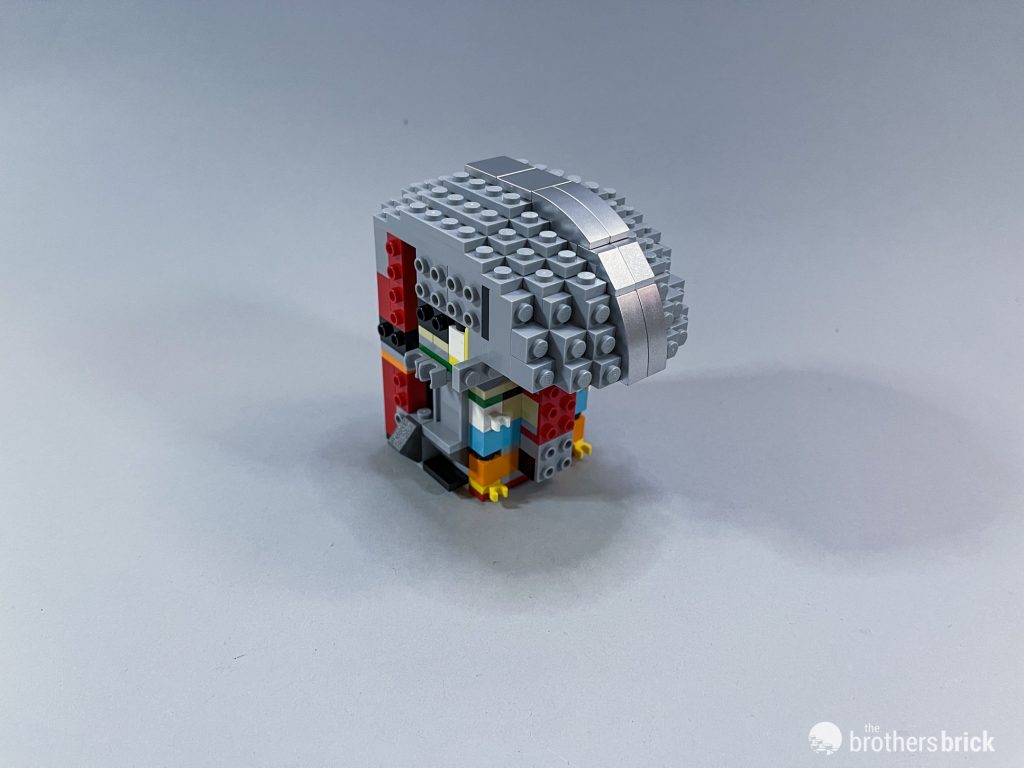










































































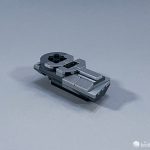




















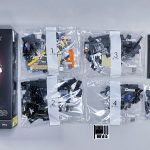















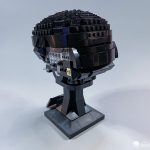
























































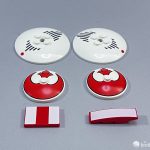




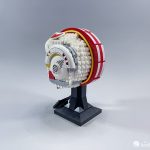







Quick question: Is the yellow hose in the Luke helmet the stiff tubing or the super flexi tubing one might find in a pneumatic technic set
The presentation is great, one of them is also cool; but why are they made this small? They fit the head of no figure and no human. Why, then, this scale?
Since they obviously serve no other purpose, I only see them as objects to be kept on a shelf, just the way a few decades ago people kept those nauseating, kitsch objects made of porcelain, glass, or wood.
I assume the sizing was based on finding a scale that makes a good looking result and fits the parts/cost budget they were shooting for. I have the Boba Fett helmet and it’s okay but I’m not blown away by most of them.
@hntrains You answered your own question with the obvious answer: they are made to be put on a shelf and displayed. Why then bother with the obnoxious questions when you know the answer before you ask it?
Making human-sized Lego set helmets is a terrible idea. It wouldn’t be comfortable to wear, it would be too expensive for people to collect several of them, too large to produce large collections of them, etc. There would be, as you say, truly no purpose in that design.
I am not really interested in what value you see in Lego, other than to post endless pointless comments on an otherwise enjoyable site, but I will fill you in on a (apparent) secret. Many people enjoy displaying things on shelves, and many people enjoy displaying Lego on shelves. Many shelves exist solely to put things on. For many people, display may be the primary purpose after building the set. This may shock and bewilder you, but I might propose that you don’t worry about it too much. Let people enjoy things the way that they do, and you can enjoy them the way that you do.
I am once again utterly amused and befuddled that you expect toys and collectibles to “serve an other purpose” other than fun and display. Your judgment isn’t necessary. You don’t have to agree with anyone else, but you could think a little bit harder about your goals before you post your annoying comments.